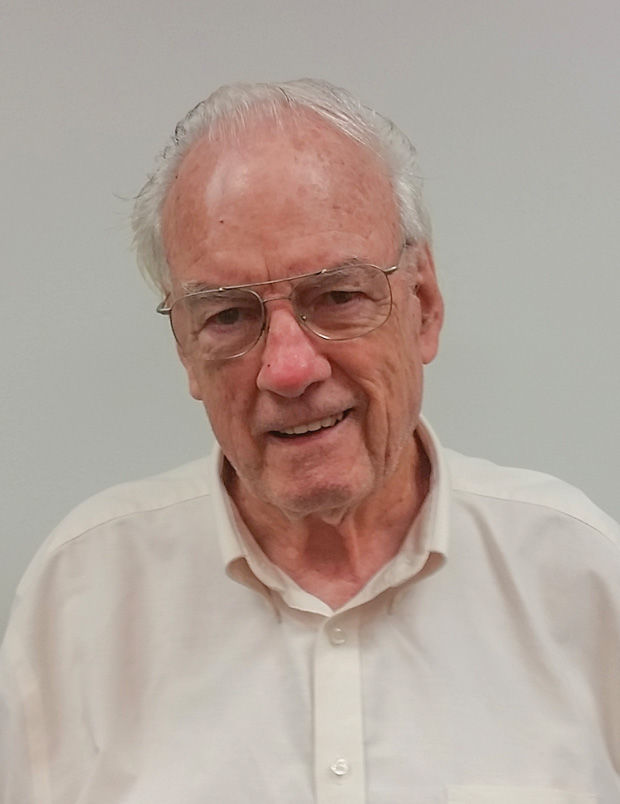Veteran remembers guarding top Nazis at Spandau Prison
Published August 24, 2017
After the Allied victory over Nazi Germany at the end of World War II, the four victorious powers — the United States, Great Britain, France and the Soviet Union – divided up Berlin into four sectors, one for each of the four powers. One of the curious features of the postwar arrangement was the conversion of the old German Spandau Prison into an incarceration facility for top Nazi war criminals who been found guilty of crimes against humanity at the Nuremberg war crimes tribunal.
Among the seven major Nazis who would serve time in the huge, 19-century German prison were Rudolf Hess, Hitler’s official deputy führer who had flown to England in order to seek a separate peace with the U.K., only to be sent to the Tower of London by wartime British Prime Minister Winston Churchill. Another was Albert Speer, Hitler’s longtime friend, who became the official architect of the Third Reich, designing many of the brutal fascist buildings of the Hitler government.
Hess remained unrepentant until the very end, while Speer admitted his complicity in the Hitler government and expressed official remorse for it. Speer was eventually released from Spandau after which he published a best-selling memoir. Hess remained the only prisoner at Spandau until he managed to commit suicide in 1987. Soon after, the facility closed down for good; it was eventually demolished.
For Ed “Fitz” Fitzgerald of Godfrey, Ill., Spandau Prison was more than just a historical curiosity. Fitz was a proud soldier in the U.S. Army during World War II. He is fiercely proud that at 16, he lied about his age in order to enlist.
Fitzgerald, now 89, will be the featured speaker at a talk Monday, Aug. 28 (see infobox for details). The Light recently caught up with this warm and engaging man, who has a ready sense of humor, in advance of his talk.
Tell us about yourself and your service in the U.S. Army.
I was raised in Wellston, Mo., during the years of the Great Depression of the 1930s. I had an early Catholic grade-school education. I lied about my age and joined the army on my 16th birthday. After boot camp at Fort Knox, Ky., I was shipped overseas to Europe by troop ship, arriving in January 1945, before the Nazi surrender in May of that year. I did not have combat “heroics,” but my heart goes out to those who did. I will always remember the stench of the dead bodies, long buried under piles of debris, human bodies, horses, dogs, rats, cats, you name it.
I did receive the European Service Medal, the Occupation Medal and the Illinois Service Medal for Valor Award, a Good Conduct Medal and the Berlin Airlift Medal. I was scheduled to be discharged on my birthday, Aug. 3, 1951.
How were you selected to serve as a guard at Spandau Prison?
Our battalion — Company I, 3rd Battalion, 16th Infantry Regiment, 1st Infantry Division – was ultimately assigned to represent the U.S. Army in the American Sector of Berlin, which was nothing special. Then, when the major war crimes trials at Nuremberg were over in October 1946, the seven prisoners not sentenced to death by hanging were sent to Spandau Prison. Their sentences ranged from 16 years to life. Those sentences started in the spring of 1947. Hess was the only one to serve his life sentence, dying on Aug. 17, 1987 in Spandau. The official cause of death was strangulation by an electrical cord in his small greenhouse where he apparently enjoyed spending time. Personally, I don’t accept the suicide claim.
How much were you able to talk to Hess and Speer? How did you find them as prisoners?
I had some brief conversations with a few of the prisoners. There was nothing “revealing” on their charges. They were interested in my life, where I was from, my interests. One prisoner, Fritz Sauckel, was constantly grieving and worried about his family. Speer was very congenial, more rational and very shrewd. I did have some correspondence with Speer after his release in 1966.
How sincere do you think Speer was in his expressions of remorse?
I do not believe Speer had a peaceful day or night the remainder of his life after he was taken into custody, all the years of his incarceration and then 20 years in Spandau. He was a broken man. I personally do believe he had remorse.
Hess flew a glider saying he wanted to make a separate peace between Nazi Germany and Great Britain. He was put in the Tower of London on orders of Churchill. Do you think his peace mission was sincere?
Hess was sincere in his mind, wanting to create an agreement between England and Germany, hoping that England would look the other way. I believe Hess was kept in prison because he knew too much about ties between Nazis and British officers. I believe he should have been released.
What lessons do you think we have learned from the careers of the major Nazis and the hateful ideas they promoted and carried out?
I have been a news junkie. I never miss the news. What lessons can we learn from the Nazis the Japanese in World War II, and North Korea and Venezuela today, is that man is a dangerous creature. … I don’t think I will ever see true peace on earth, good will toward man in my lifetime. Never. Evil resurfaces, over and over again. We defeated the Nazis during World War II, but we are still fighting against neo-Nazis and others who spew hatred. The battle continues.
















